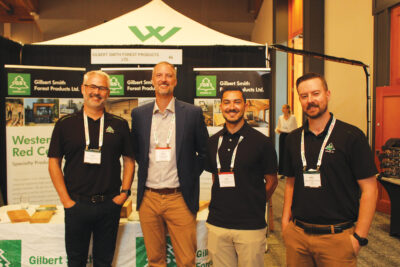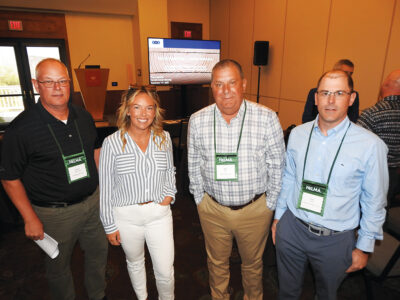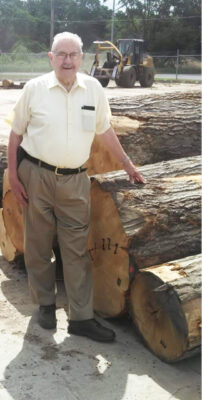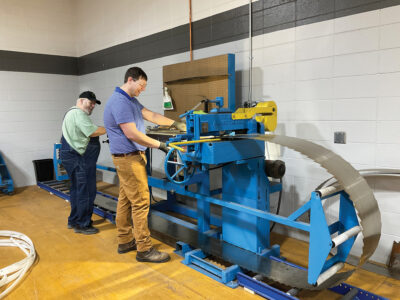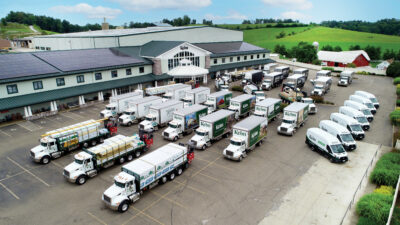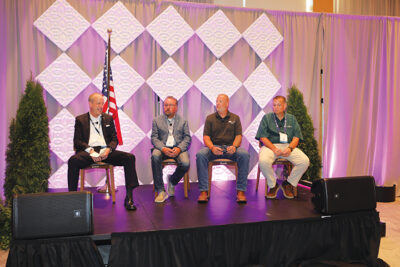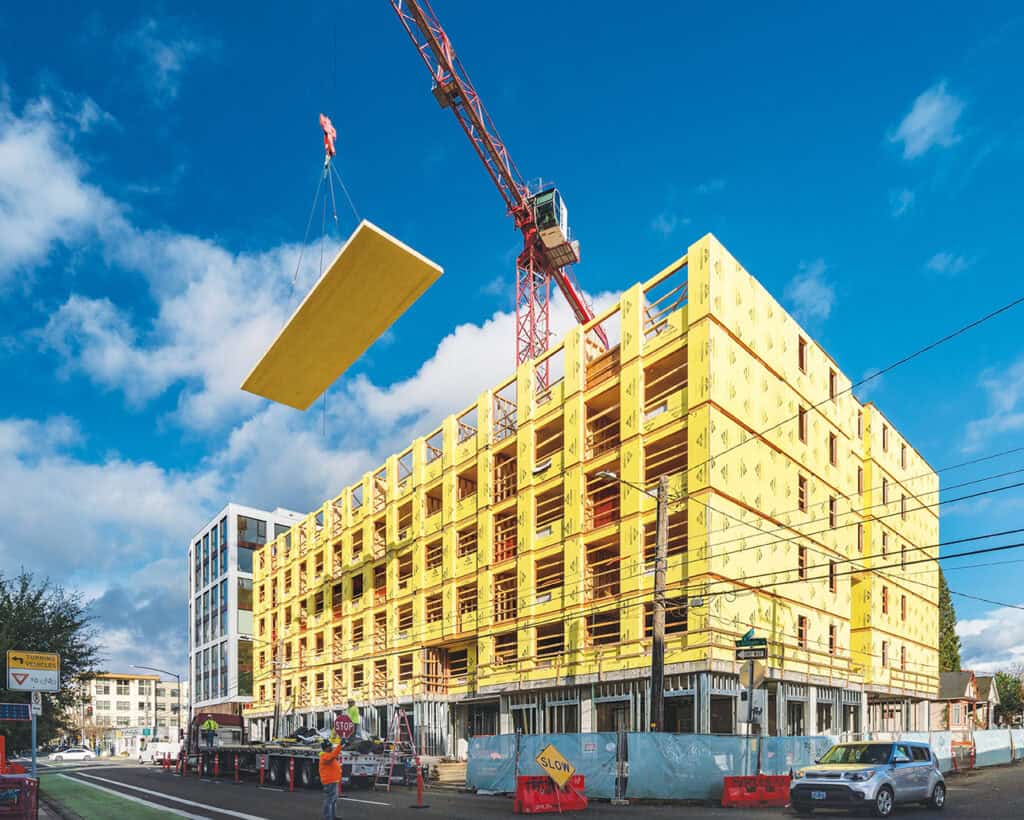
The softwood lumber industry has plenty of reasons to be optimistic about substantial long-term growth of the wood products market. It’s become commonplace for building designers and developers to cite wood construction as a key strategy for constructing their projects more quickly and sustainably. Projects teams are looking for opportunities to develop taller and more repeatable buildings using light-frame, hybrid, or mass timber building systems. Demographics indicate a strong need for affordable single-family homes and multifamily buildings, and wood’s market share in multifamily projects is continually growing[1].
Much of this momentum can be attributed to the industry’s investments in growing incremental demand and in removing barriers to wood construction through codes and standards work, training, and education. The Softwood Lumber Board has supported and complemented those initiatives with its work to defend market share for lumber in single-family and outdoor applications while aggressively pursuing new market opportunities in non-residential and multifamily construction. As of now, the SLB’s efforts have generated nearly 15 bbf of incremental lumber demand since 2012[2].
This collaborative work has put the industry in a stronger position than ever before, but more can be done to accelerate the rate of market share capture. Here’s a look at how the SLB has found and converted opportunities for market growth —and where we see room for new gains in the years to come.
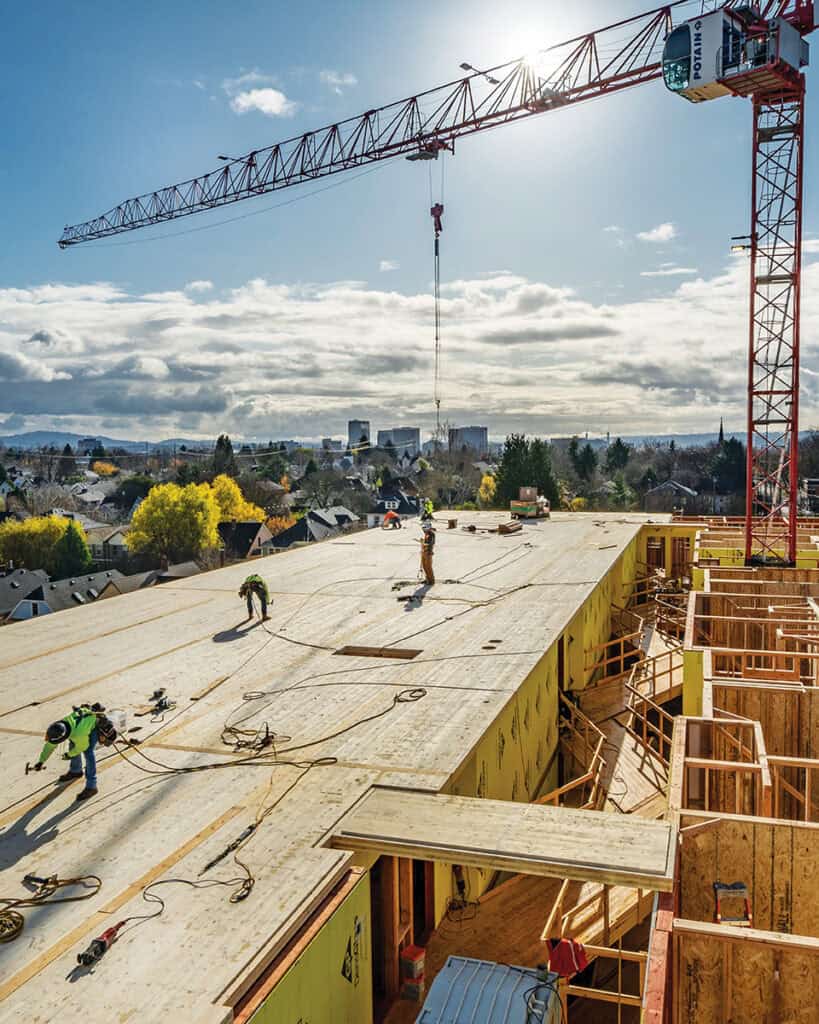
Generating Consistent Growth
The SLB grows incremental lumber demand by investing in four core programs: WoodWorks, the American Wood Council (AWC), Think Wood, and Education. Working together, these programs influence key decision makers for construction projects and convert more projects to wood.
WoodWorks utilizes a team of expert staff to work directly with design and construction teams to support and influence projects with the goal of facilitating a shift toward wood. Since 2015, the program has directly influenced 3,510 projects that used 6 bbf of incremental lumber demand[3]. As market volatility has slowed the project pipeline in recent years, WoodWorks continues to grow demand through education events that build relationships and develop project leads. The program is helping to overcome key barriers to mass timber adoption, for example, through an installation curriculum for general contractors and installers and mass timber mockups that have been used by 1,300 participants to complete 24,000 hours of installation training.
The AWC protects and expands opportunities for wood construction in building codes and standards. The SLB, U.S. Endowment, and AWC were instrumental in gaining acceptance in the 2021 building code for tall mass timber construction up to 18 stories, and the AWC is continuing to expand opportunities in the 2024 and 2027 building codes that make mass timber more attractive and cost competitive. Recently, the AWC has focused on generating robust sustainability data to validate wood’s carbon-cutting credentials for architects and design professionals.
Think Wood is a communications platform that influences building designers to grow interest in using wood. It’s become the most significant and widely recognized digital communications platform devoted to covering light-frame construction and mass timber projects in the United States, and in recent years the program has grown its presence with media partners focusing on secondary audiences, such as engineers, developers, and general contractors.
The SLB is also focused on education to ensure the next generation of architects, engineers, and contractors are knowledgeable and passionate about building with wood. In addition to launching the Wood Institute, the first one-stop shop for continuing education about wood building systems, SLB Education is growing postsecondary faculty expertise in wood construction with a series of eight workshops that has reached 173 professors at 123 schools over the past three years.
Reaching Market Share Potential
Even with the industry’s current efforts to grow market share, business as usual won’t allow us to reach its full potential. One of the opportunities that the SLB has spotted is to expand wood’s role in steel and mass timber hybrid construction systems. Alongside organizations such as the World Steel Association, the SLB is promoting hybrid wood construction, encouraging builders to leverage the benefits of both materials to build efficient, cost-effective, lower carbon buildings.
The SLB’s success in spurring new demand has been driven by trailblazers: early adopters of mass timber and taller multi-story light-frame construction. Growing wood’s market share means appealing to design professionals and developers who value confidence: the reassurance of precedent and complete solutions over sustainability attributes and innovation. The industry must make mass timber and taller light-frame construction predictable: the easy, obvious, and most profitable solution.
Multifamily projects, affordable housing, education, and offices present the greatest opportunity to reach an incremental annual volume growth of 4.9 BBF. The share of apartment buildings with 20 to 49 units has grown over five years from 26% to 34%, according to the U.S. Census Bureau. Today, light-frame construction represents 77% of the market share in the 1-4 story segment and 48% of the 5-8 story segment[4], offering significant incremental growth opportunity for lumber.
Education is another market with significant volume, as pent-up demand from postponed projects boosts activity and demographic trends lead the under-25 population to increase by nearly 2 million by 2030. With less than 5% of market share over the past six years and 1.7 BBF of potential[5], there is a significant margin for the taking, specifically in the K-12 segment. Offices and banks represent an additional 1.2 BBF of potential as developers look to differentiate their buildings with beautiful and biophilic wood-based construction systems that enhance the tenant experience.
The AWC, WoodWorks, Think Wood, and SLB Education are proven programs. Every quarter the SLB reports to the industry how they are enhancing training, building codes, and education to increase wood design literacy among architects, developers, and engineers, as well as commercial general contractors. And with every accomplishment, we clarify a vision for what more we can do. It’s important for lumber producers of all sizes to align on a plan to accelerate demand for lumber, granting a new mandate for the SLB to forge a consensus path towards diversification and market expansion for our products.
[1] https://slbwood.app.box.com/file/13550741034 01?s=9dvwdi5a8007tmhm3gwyflqtbrlz51ls, slide 5
[2] USDA #7285
[3] WoodWorks data
[4] FEA Research for SLB, https://slbwood.box.com/s/bpfmedmzaklwgz359yrreafhjcto2o2l, slide 6
[5] FEA Research for SLB, https://slbwood.box.com/s/bpfmedmzaklwgz359yrreafhjcto2o2l, slide 6


